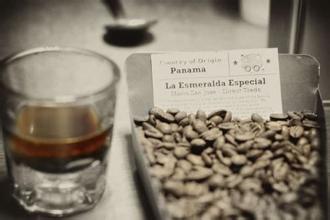The Origin of Arabica Coffee beans in Africa an introduction to the Flavor characteristics of boutique Coffee Bean producing areas in Ethiopia
Ethiopia is one of the major producers of Arabica coffee in Africa, producing the best Arabian coffee in the world. It is said that coffee was first discovered by shepherds in Essekafa, and the name of coffee evolved from Kafa, so Essex is still the hometown of coffee. The geographical environment of coffee production and processing is very suitable for coffee growth. Coffee is mainly grown in the southern highlands between 1100 and 2300 meters above sea level. The main coffee producing areas are Harar, Limu, Djimma, Sidamo, Kaffa, Yergacheffe and Wellega. The soil in these areas is well drained, slightly acidic and red loose. Ethiopian coffee is harvested once a year. The beautiful white coffee flowers bloom from March to April, and then the fruit begins to grow. From September to December, the red coffee fruit is ripe for picking. The new season of coffee begins to be exported from November to December. At present, about 25% of the Ethiopian population directly or indirectly depends on coffee production for a living. The majority of farmers use traditional planting methods. Artificial care of coffee trees, the use of organic fertilizers, do not use harmful pesticides and herbicides, etc. Therefore, most of the coffee produced by Ethiopia is organic coffee. Due to different planting methods, coffee can be divided into three types: forest-semi-forest coffee (Forest or semi-forest coffee), courtyard coffee (Garden coffee) and plantation coffee (Plantation coffee). 60% of the coffee belongs to forest-semi-forest coffee. In such a wild coffee forest, pesticides are not used at all, but biological methods are used to control pests. 35% of the coffee is courtyard coffee. In this kind of coffee garden, the planting is three-dimensional. Coffee is located in the lower layer and gets a suitable growth environment in the shade of other crops. Fertilizers are mainly fallen leaves, withered grass and animal manure. 5% of the coffee belongs to plantation coffee. This is a modern way of growing. Coffee is also grown in a forest, but new varieties are used and planted in rows with other shade trees. Due to different processing methods, coffee can be divided into washed coffee (Washed coffee) and sun-cured coffee (Sun-dried coffee). Washed coffee accounts for 35% of exports. Good quality washed coffee is processed with freshly picked fully ripe fruit, picked carefully and closely monitored by professionals. The picked clean coffee beans are pulped on the day of picking, then fermented, washed, dried and peeled. The humidity of processed coffee beans is kept at about 12%. Sun-cured coffee accounts for 65% of exports. Mainly picked by families, red coffee beans are placed on cement floors or on high tables to dry to about 11.5% humidity, then peeled and cleaned. The natural characteristics of coffee beans include size, shape, acidity, texture, taste and aroma. Essel's coffee beans are small, fragrant and sour like wine, and are loved by coffee lovers. Because of its unique aroma and taste, Ethiopian coffee is often used in the production and variety improvement of beverages, ice cream and candies. The world-famous Ethiopian coffee is mainly as follows: 1. Limu coffee grows between 1400 meters and 2000 meters above sea level. Wash the coffee. Excellent quality, with strong nut aromas, suitable acidity, with the intensity of wine. The annual output is 29000 tons. 2. Jima Coffee grows between 1400 and 1800 meters above sea level. Sun-baked coffee. Slightly sour, with nutty aromas and a long finish. The annual output is 70000 tons. 3. Gambi coffee grows between 1500 meters and 2300 meters above sea level. It is gourmet coffee with moderate acidity and fruity aroma. The annual output is 34000 tons. 4. Yerqin coffee grows from 1500 meters to 2200 meters above sea level. Mocha flavor, with floral and spicy aromas. The average annual output is about 28000 tons. 5. Sidamo Coffee grows at an altitude of 1400-2200 meters. Suitable acidity and high quality. The average annual output is about 37000 tons. 6. Harald Coffee grows on highlands above 2700 meters above sea level. It is the best coffee in the world, medium acidity, intoxicating exotic flavor, with slightly tipsy, dried fruit aroma, is pure mocha coffee. The average annual output is about 26000 tons.

Important Notice :
前街咖啡 FrontStreet Coffee has moved to new addredd:
FrontStreet Coffee Address: 315,Donghua East Road,GuangZhou
Tel:020 38364473
- Prev

The latest coffee information and introduction
In 1931, it was exported from Geisha Mountain in southwest Ethiopia to Kenya in obscurity, Tanzania and Costa Rica. It was transplanted to Panama in the 1960s. After nearly half a century, it was amazing. It defeated Changsheng Army, such as Boben, Kadulla, Kaduai and Tibika. It included 2005 in one breath.
- Next

Panamanian Emerald Manor Esmeralda Manor Fine Coffee Rose Summer Coffee latest Information
In the early years, the identification of top coffee mostly followed Japan, while Geisha, with its hurricane-like power, swept the coffee world. The coffee revolution was so fierce that the blue mountains of Jamaica and Kona of Hawaii, which had occupied the throne of the coffee kingdom for a long time, had to be shunned. This wild species, which originated in Ethiopia, is now worth it after numerous battles.
Related
- Detailed explanation of Jadeite planting Land in Panamanian Jadeite Manor introduction to the grading system of Jadeite competitive bidding, Red bid, Green bid and Rose Summer
- Story of Coffee planting in Brenka region of Costa Rica Stonehenge Manor anaerobic heavy honey treatment of flavor mouth
- What's on the barrel of Blue Mountain Coffee beans?
- Can American coffee also pull flowers? How to use hot American style to pull out a good-looking pattern?
- Can you make a cold extract with coffee beans? What is the right proportion for cold-extracted coffee formula?
- Indonesian PWN Gold Mandrine Coffee Origin Features Flavor How to Chong? Mandolin coffee is American.
- A brief introduction to the flavor characteristics of Brazilian yellow bourbon coffee beans
- What is the effect of different water quality on the flavor of cold-extracted coffee? What kind of water is best for brewing coffee?
- Why do you think of Rose Summer whenever you mention Panamanian coffee?
- Introduction to the characteristics of authentic blue mountain coffee bean producing areas? What is the CIB Coffee Authority in Jamaica?

